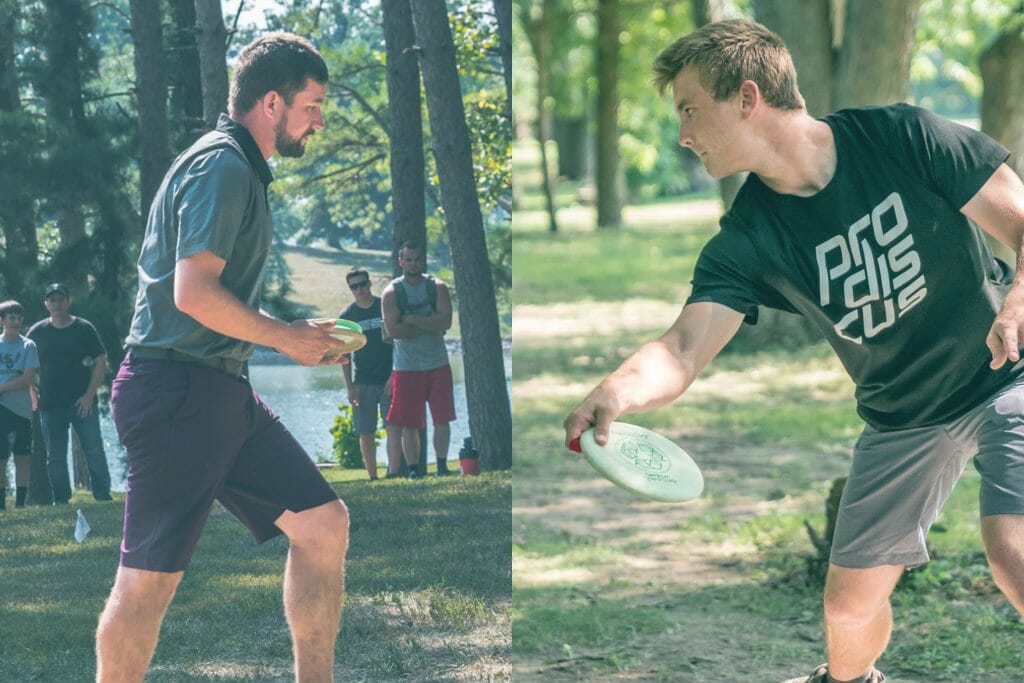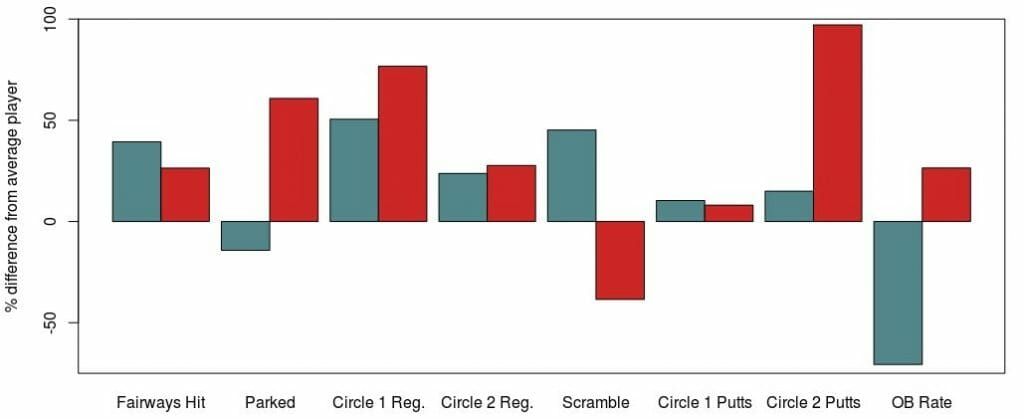Originally published at: https://discgolf.ultiworld.com/2018/08/14/sexton-jones-different-approaches-ledgestone/
[caption id=“attachment_10116” align=“aligncenter” width=“1024”]
The Ledgestone Insurance Open did not disappoint. It had an exciting and excruciating ending (just check out the post-production footage from Central Coast Disc Golf), along with amazing shots, and a variety of strategies executed by the large and diverse field of players. Two of them, the winner of the event, Nate Sexton, and Kevin Jones, who finished in fifth place, exemplify what we could consider two extremes of possible strategies. Jones played aggressively, with only an 18-percent par rate and an incredible 60-percent birdie rate. Sexton, played extremely smart golf, winning, in part, as a result of carding only four bogeys, with none coming in the final round.
But all that information you can get by looking at the player pages on UDisc Live. Let’s use all that information and the power of some analysis to provide more in-depth comparisons. Below is a plot showing the percent difference from the average Open player (for all tournaments on UDisc Live) for Sexton and Jones.
[caption id=“attachment_10104” align=“aligncenter” width=“1024”]
Percent difference from average player for Sexton (blue bars) and Jones (red bars) at 2018 Ledgestone Open. The average Open player is calculated using data from all tournaments available on UDisc Live. Image: Aaron Howard[/caption]Several things stand out for Sexton. He hit a ton of fairways (40-percent above average) to go along with his unbelievably high scramble rate and low OB rate. All of this points to Sexton’s smart, not conservative play. I say not conservative, because he still had a birdie rate of 44-percent, but he rarely made mistakes, and when he did, he was able to save par at an 85-percent rate.
For Jones, he parked many holes, hit a lot of greens, made perhaps an unsustainable proportion of his Circle 2 putts, and went out of bounds at a high rate. Suffice it to say, he approached the course quite a bit differently than Sexton’s, with perhaps a strategy focused on attacking each hole. This, opposed to Sexton’s strategy, which appeared to be a combination of selectivity and letting scoring opportunities come to him, and where he appears to plan out where to attempt scoring under par, and where to play for par. The stats indicate Jones was singularly focused on scoring at every opportunity; he clearly went for a lot of shots and hit many of them (let’s not forget he finished fifth!), but also missed many of them along the way.
Does this pattern sound familiar to you? It should because it is very similar to Paul McBeth’s from the 2017 Ledgestone. Remember, he also played very aggressively, scored a lot, and finished well (second behind Josh Anthon). In fact, McBeth’s 2017 tournament at the Eureka Lake course is so similar to Jones’s 2018 it ranks second in similarity score among all of the 2,895 player tournaments available on UDisc Live. ((Look back at this article for a review of my similarity score method.)) Here is a list of the top-10 similarity scores. Remember, a lower similarity score is better.
[table id=109 /]
In sum, Sexton and Jones played very different golf at Ledgestone last weekend. Both played well, but Sexton executed his plan “to a T W” by balancing his aggression (44-percent birdie rate) with his smart play and an eye toward minimizing risks (0.042 OB rate), while Jones was probably a bit too daring with his performance (0.181 OB rate). Both types of golf have their own merits and detractive characteristics, but both are fun to watch. Sexton and McBeth have each displayed how these different styles can lead to wins on the sport’s biggest stage—it’s only a matter of time until Jones get there himself.


